How to start a route
When you walk up to a route, you'll likely see a tag telling you the grade, but did you know that where the tag / grade is also tells you how to start the route? You'll be glad to know there's not much to it and in this guide I'll show you what the different tag positions mean.
What types of tag are there?
Depending on which gym you go to, the tags might look a little different. First we'll cover the tags and then we'll cover what their position means in terms of how to start. There are a few different ways of identifying how a route starts. I'll detail the most common ones:
Tag with grade printed on
These tags are straight forward, they tell you the grade of the route and also where to start. They look like this.
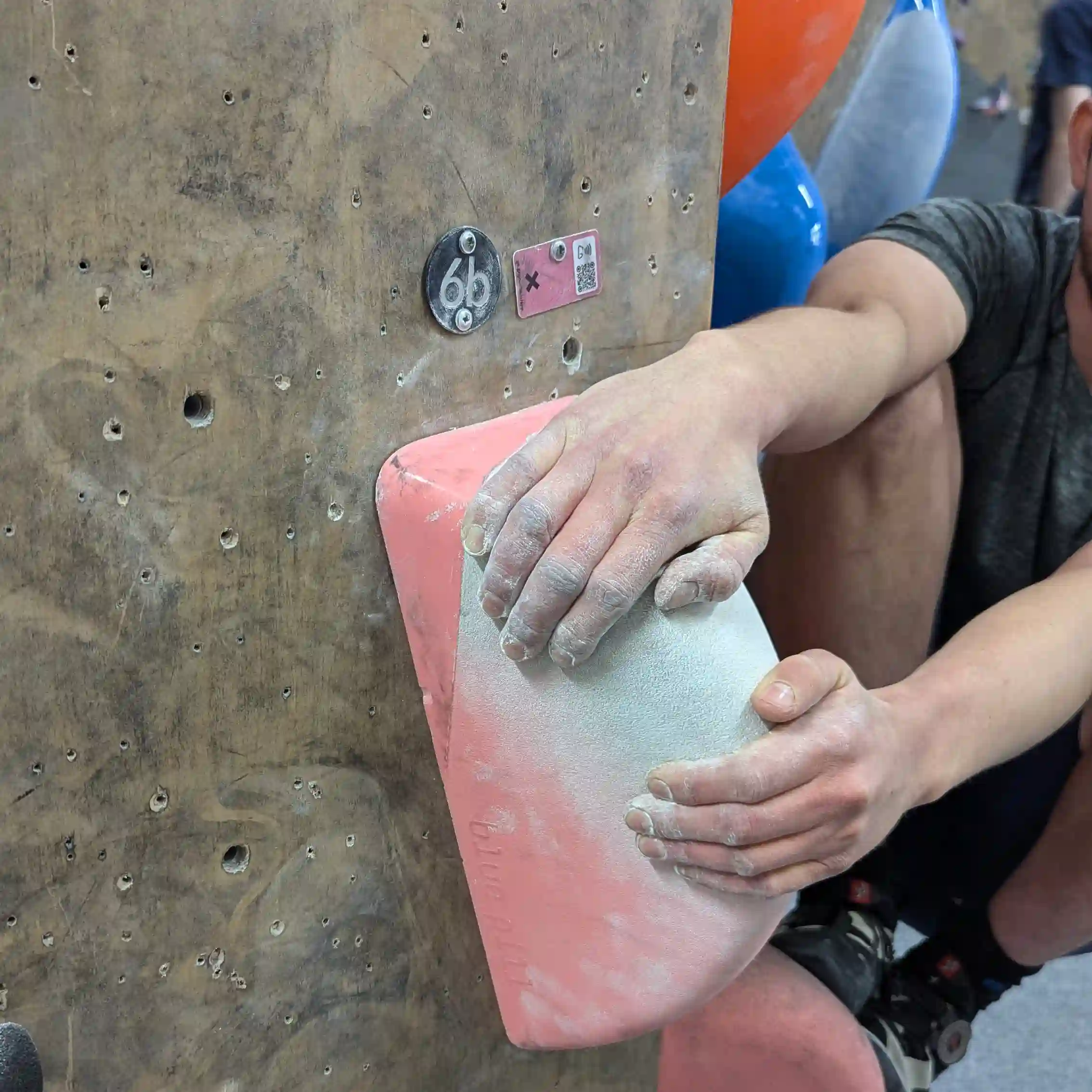
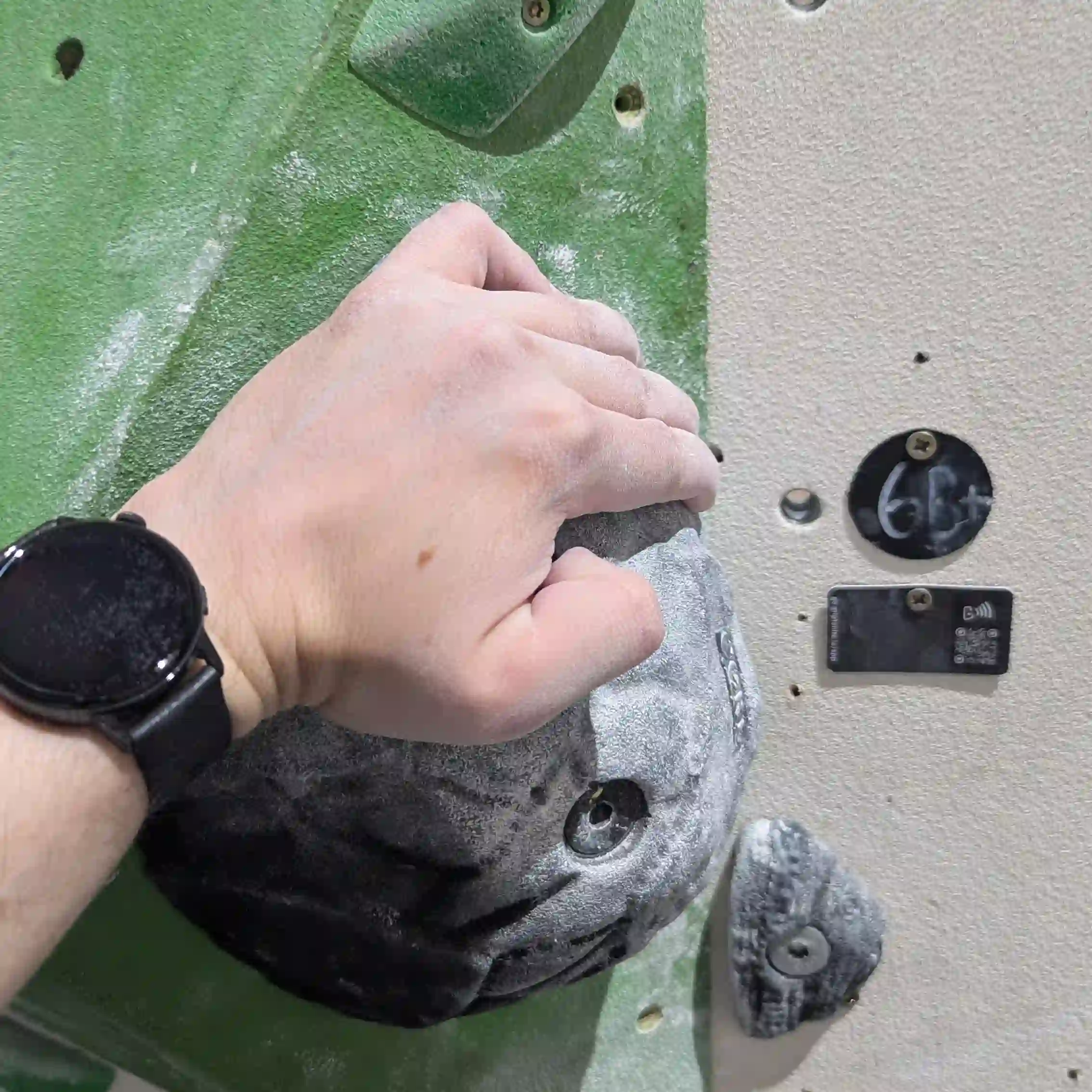
Griptonite Tags
These tags are usually colour coded so you know the route belongs to a group, however instead of a grade there is a QR code you need to scan with the Griptonite app. Quite a lot of climbing gyms use Griptonite so if you like knowing what the grade of a route is, you should download the app.
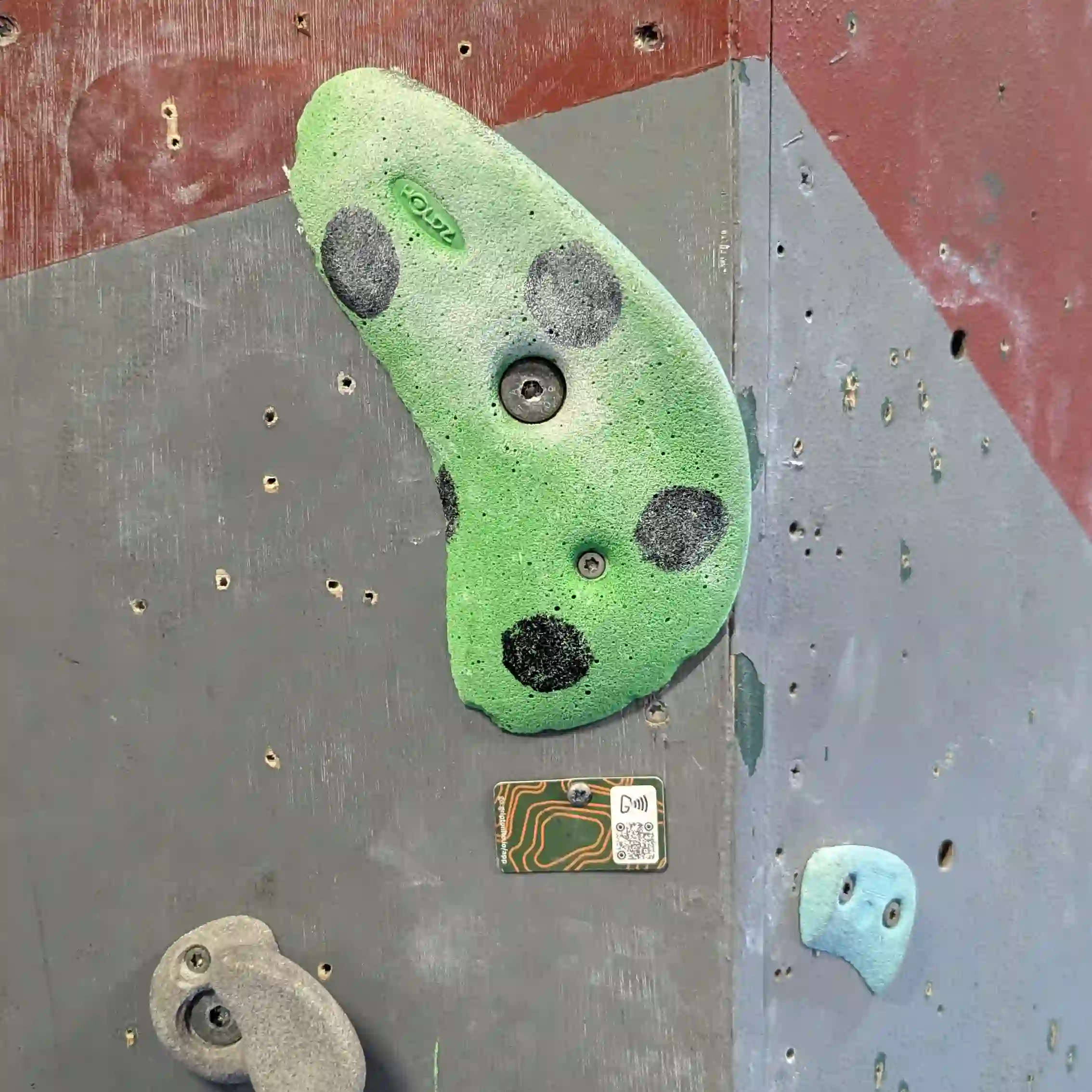
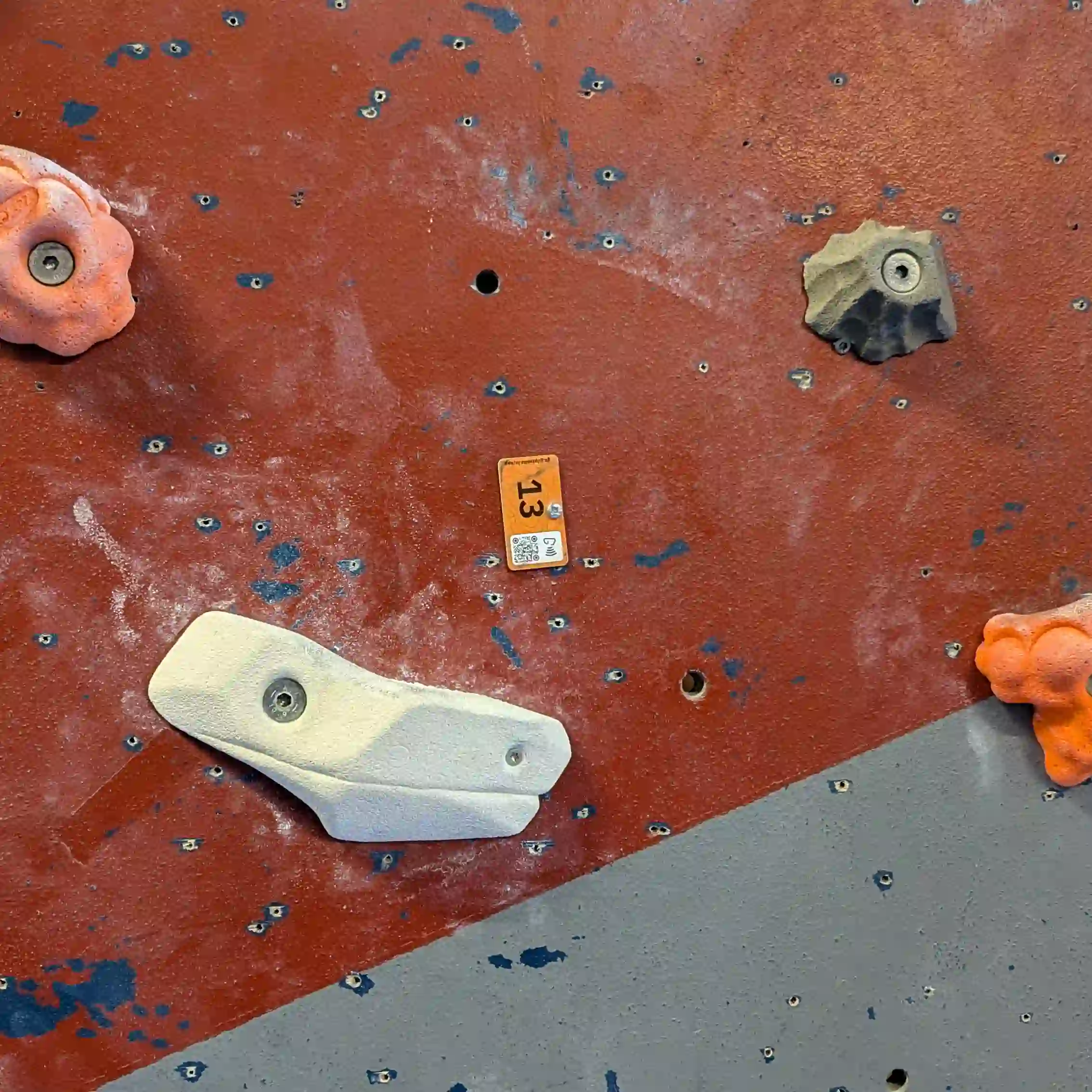
Tape or chalk markings
These type of markings might also have a tag with them. Expect to see tape when the route setter wants to show you where to put your hands and feet.
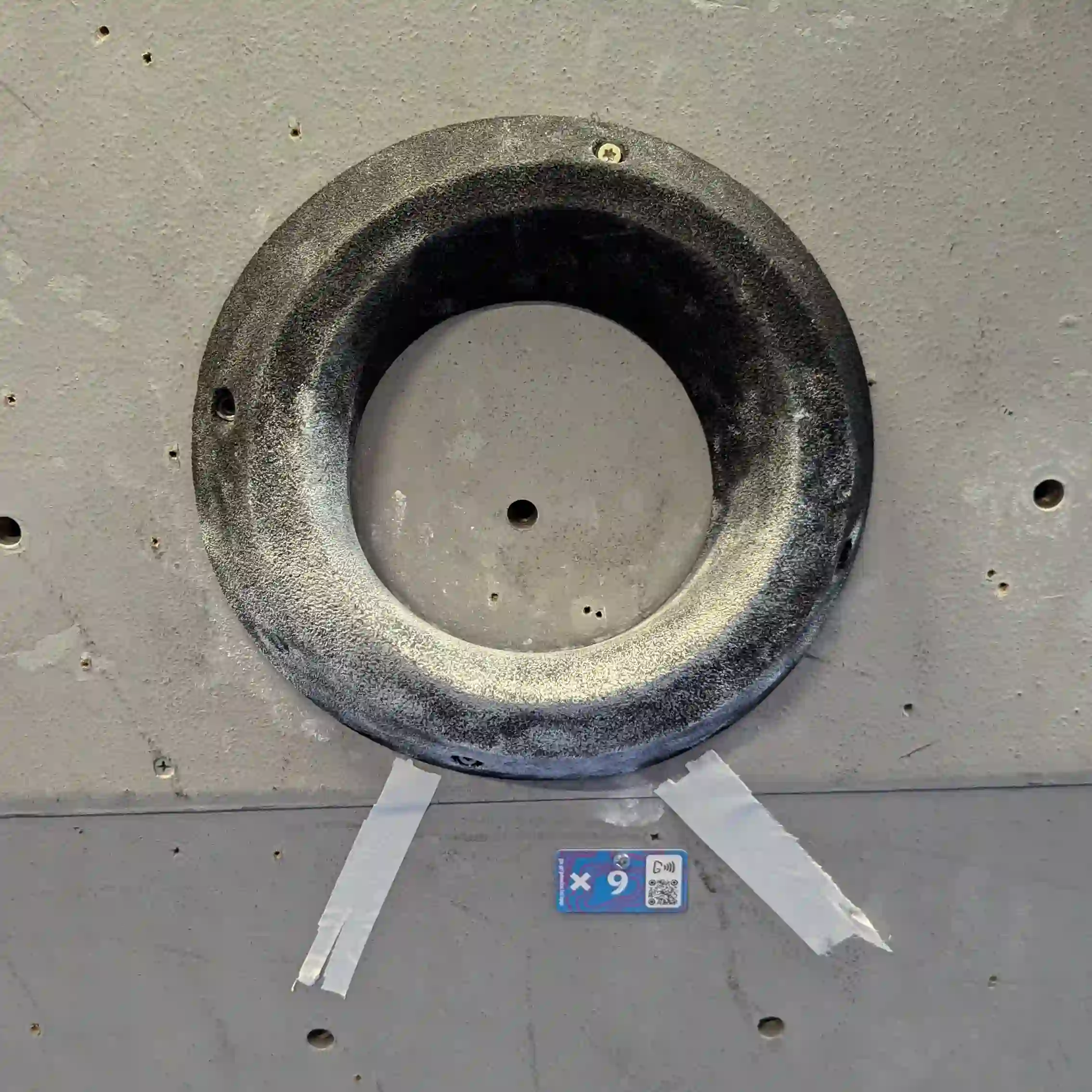
How to start a route
It's important to note that, although the tags tell you how a route was intended to be started. It's up to you to figure out the best way to implement it! That's the beauty of climbing. The route is a problem that needs to be solved. A lot of routes are very apparent on how you start them, others require some thinking. Have fun and remember there is usually more than one way to start or complete a route.
Tags below or above the hold
If you see a tag which sits directly under or on top of a hold, this indicates a two-handed start. You must start with both hands on the hold. You can put you feet anywhere. If the tag is on top of the hold, it might mean that you just need to touch the hold. You might find these types of hold on the corners of walls (think right angles) where you get your feet on the footholds first and then you have to bend down and touch the starting hold.
Tags that sit in between two holds
These tags indicate that it's a two handed start, but on different holds. It's normally quite obvious which holds are involved in the start as they'll be the same colour. Again it's up to you where you put your feet. More often than not there will be footholds nearby.
Things to watch out with these types of routes is that the other hold could be on the other side of the wall. So if you see a tag, but don't see the other hold AND its on a corner, check round the other side!
Tape on holds
Tape is a little bit more rare to see. However it's pretty straight forward. You'll see one or two lines of tape near a hold which indicates how many hands or feet need to go on said hold.
For example, two lines of tape under a hold would mean a two-handed start. Or one line of tape on a hold with two lines of tape on a smaller foothold would mean a one handed start with both feet on the same foothold. Basically the lines of tape mean how many hands or feet go on a given hold.Whats next?
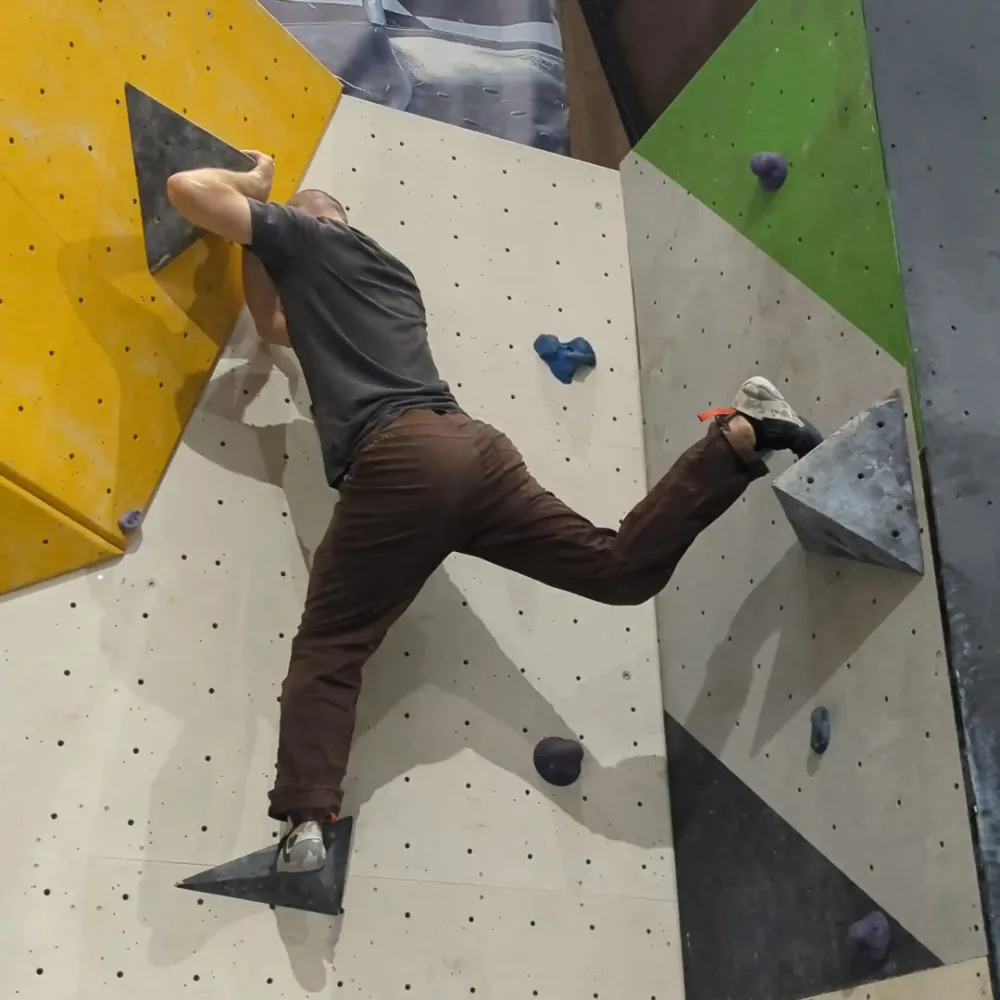
Climbing Techniques
The tags next to holds also tell you how to start a route. We explain what they all mean..
View Guide